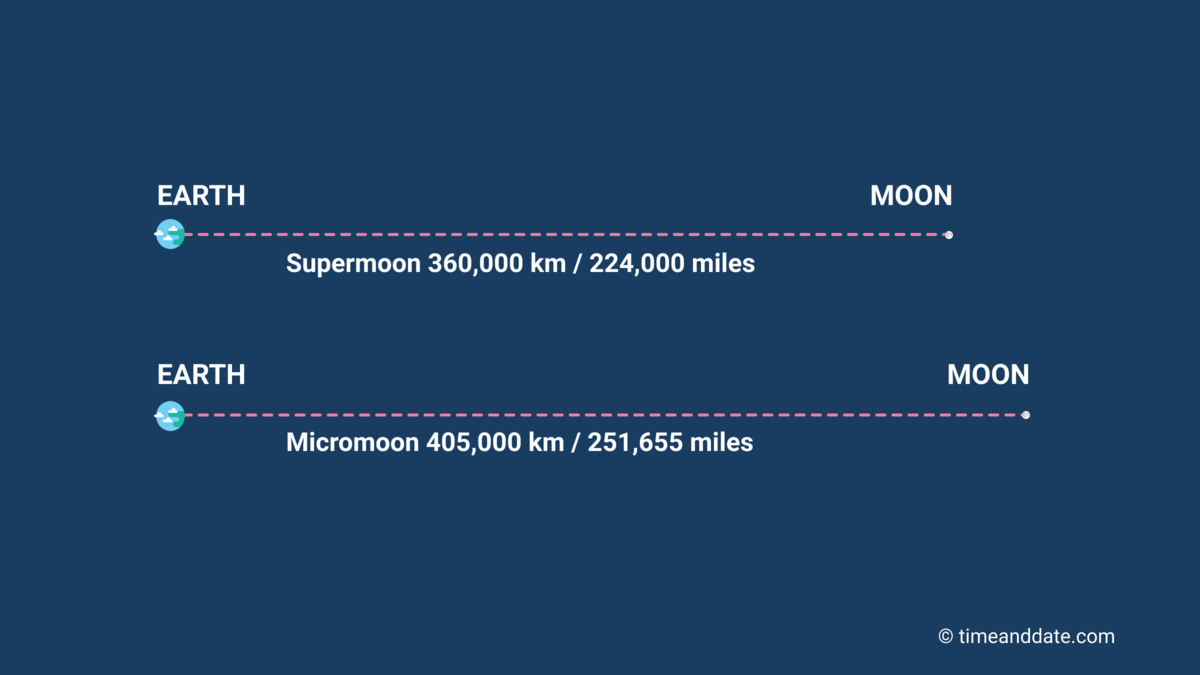The Moon's apogee is a concept in astronomy that refers to the point in the Moon's orbit around the Earth at which it is furthest from our planet. To fully understand this phenomenon, it's essential to delve into several aspects:
1. Orbital Mechanics: The Moon orbits Earth in an elliptical path, which means its distance from Earth varies over time. This orbit is governed by the laws of celestial mechanics, primarily derived from Newtonian physics.
2. Apogee Defined: The apogee is the specific point in the Moon's elliptical orbit where it is farthest from the Earth. This contrasts with the perigee, where the Moon is closest to Earth.
3. Distance Variations: At apogee, the Moon is about 405,500 kilometers (about 252,088 miles) from Earth, compared to about 363,300 kilometers (about 225,623 miles) at perigee.
4. Orbital Period: The Moon completes an orbit around Earth approximately every 27.3 days (sidereal month). However, due to Earth's simultaneous orbit around the Sun, the time from one apogee to the next (or one perigee to the next) is about 27.55 days.
5. Impact on Observations: When the Moon is at apogee, it appears slightly smaller in the sky than when it is at perigee. This difference is noticeable when comparing photographs of the Moon at these two points.
6. Effect on Tides: The Moon's gravitational pull influences Earth's tides. At apogee, its pull is weaker, leading to slightly lower high tides and higher low tides compared to when it is at perigee.
7. Historical and Cultural Significance: Throughout history, the Moon's phases and positions (including apogee and perigee) have been important for various cultures for calendar-keeping, navigation, and agriculture.
8. Scientific Importance: Understanding the apogee and perigee helps astronomers and scientists in various fields, including studying Earth's rotation, gravitational effects, and the dynamics of Earth-Moon interactions.
9. Space Missions: Knowledge of the Moon's apogee and perigee is crucial for planning space missions, including satellite launches and lunar missions, to optimize trajectories and fuel usage.
10. Eclipses and Moon Phases: The position of the Moon in its orbit, including at apogee and perigee, affects the occurrence and type of lunar and solar eclipses, as well as the variation in the Moon's phases.
11. Astrophotography and Observation: Enthusiasts and professionals in astrophotography take into account the Moon's apogee and perigee to plan for the best observational or photographic opportunities.
12. Impact on Earth's Climate: Some studies suggest that the Moon's gravitational pull at different points in its orbit, including the apogee, may have subtle effects on Earth's climate and weather patterns, although this is a subject of ongoing research.
In summary, the Moon's apogee is a fundamental aspect of lunar science, playing a crucial role in our understanding of celestial mechanics, Earth-Moon interactions, and its influence on various Earth phenomena.



Share:
How to Make the 2024 Eclipse a Memorable Experience for Students
Moon's Perigee Explained